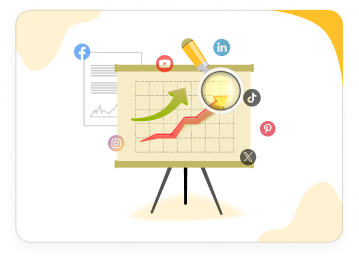Ready to Simplify Your Social Media Analytics? Fill out the form to instantly download your free Social Media Analytics Template and take control of your performance tracking.
This template is designed to help you save time, stay organized, and make data-driven decisions to improve your social media campaigns.
What makes it even better?
It’s a fully customizable Google Sheet, perfect for team collaboration and optimizing your analytics for better engagement and growth.
What you’ll gain:
➔ Analyze key social media metrics like engagement, reach, and conversions to measure performance effectively.
➔ Track campaign success with a structured framework, ensuring clear objectives, timelines, and measurable outcomes.
➔ Optimize social media strategies by identifying trends, audience behavior, and high-performing content for better ROI.







